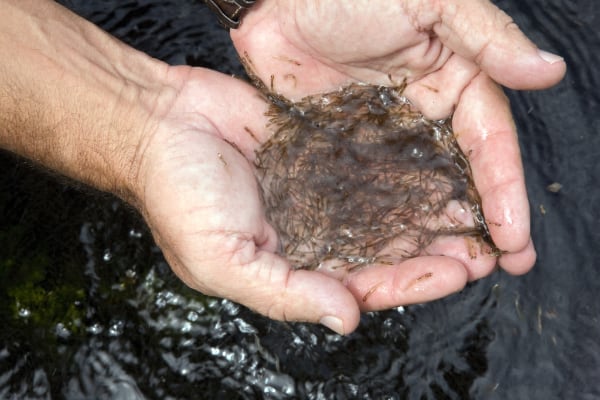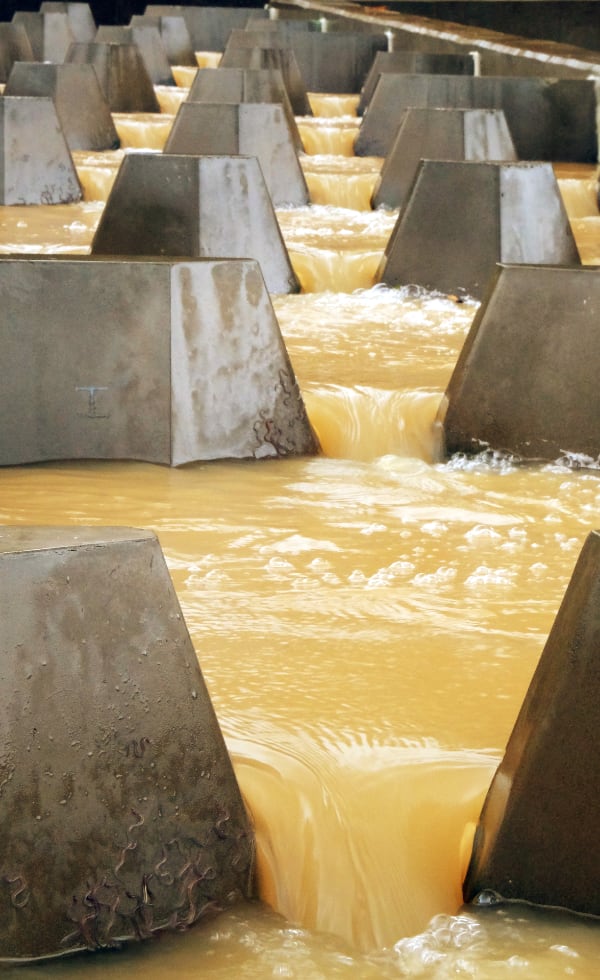What is fish migration?
Fresh and saltwater fishes move within waterways at some stage in their lives. Some may only move a few kilometres, other hundreds of kilometres between freshwater and the sea, or vice versa. Barramundi are famous for travelling upstream as small juveniles, growing into adults in freshwater, then returning to the sea to spawn. Eels undertake the biggest migration known. They spawn in the Pacific Ocean near New Caledonia, then ride the East Australian Current as larvae until they find a river entrance and head upstream as elvers (also known as glass eels). They grow to huge sizes in freshwater reaches, then migrate back downstream and out to New Caledonia where they spawn before dying.
Why do they migrate?
Fish migrate for a variety of reasons including:
- To access food, habitat and shelter
- To spawn
- To avoid predators


What is a barrier?
Barriers are obstacles that prevent fish migrating which can result in reduced fish stocks and local extinctions. Barriers include but are not limited to road crossings, causeways, weirs, dams, floodgates, culverts, and pipes. When we think of fish navigating barriers, many of us picture salmon leaping over waterfalls, and perhaps the hungry grizzly bear catching them as they jump. Unfortunately, Australian fish are not able to leap over obstacles like salmon nor are they able to sustain high swimming speeds for prolonged periods.
What is a fishway and why do we need them?
Fishways allow fish to get past barriers. They are like a set of stairs for fish. Each step is at the perfect height for them to swim up, water velocities and turbulences are exactly right, and there are areas within the fishway where the fish can rest if they get tired. Fishways allow fish to migrate both upstream and downstream safely.
What type of fishways are best?
Fish passage devices come in many forms as there are a wide variety of barrier types for which they are designed. In general, culverts will have roughened beds or baffles installed in them, while low barriers less than 5 metres high will have step like fishways such as bypass channel, rock ramp, cone or vertical slot fishways, while high barriers such as dams will have more technical fishways such as fish locks or fish lifts. The best fishway will be dependent on many factors associated with your particular structure.
How does electrofishing work?
Electrofishing works by placing an electric current into the water with a specially designed machine that temporarily stuns the fish and enables them to be collected by a dip netter. The electric current used in electrofishing is specifically formulated to be safe for the fish, only briefly stunning the fish before collection.
Do I require a development approval for my structure?
Nearly all instream barriers constructed in Australia require some form of approval to ensure that they meet the requirements for the provision of fish passage to the local fish species. The type of approval is dependent on the location of the barrier in the river system and the state rules around the provision of fish passage at barriers. In general, only the smallest barriers on the smallest streams may be exempt from approvals, all other barriers require some form of approval.